If you’ve ever watched a cowboy action shoot-off - boots dusted with dirt, six-shooters blazing, and a lever-action rifle clacking away in rhythm - you’ve seen the real deal. These aren’t props. They’re tools chosen for a reason. And the lever-action rifle? It’s not just a relic. It’s the backbone of cowboy action shooting for good reason.
It’s Built for Speed, Not Just Show
Think about how fast you need to move in a cowboy action match. You’ve got a target at 25 yards, then you sprint to the next, reload, and fire again. Every second counts. A lever-action rifle lets you cycle rounds with one smooth motion: pull down, push up, and you’re ready. No bolt to twist, no slide to rack. Just your hand, your wrist, and the rifle. It’s faster than a bolt-action, smoother than a pump, and doesn’t need two hands to reload like a semi-auto.
Winchester 1873s and 1892s were designed for this. The lever is positioned right where your hand naturally falls when holding the pistol grip. You don’t have to reposition. You don’t have to think. Your body remembers the motion from decades of ranch work and real-life gunfights. That muscle memory? It’s why cowboys didn’t switch to other designs - even when they became available.
It Works With the Same Ammo as Your Revolver
One of the biggest practical advantages? Lever-action rifles in cowboy action shooting typically use the same cartridge as the cowboy’s revolver. Most shooters use .45 Colt, .44-40, or .38 Special. That means one box of ammo serves both your pistol and your rifle. No need to carry multiple types. No confusion in the dark. No fumbling for the wrong shells when adrenaline’s pumping.
Back in the 1870s, this was a game-changer. A cowboy riding out to deal with a herd of rustlers didn’t want to carry three different kinds of bullets. He wanted one round that worked in his revolver, his rifle, and even his shotgun if he had one. The .44-40 Winchester, introduced in 1873, was the first cartridge designed to be used in both pistols and rifles. That’s not coincidence - it was necessity.
It’s Reliable in Dust, Rain, and Mud
Real cowboys didn’t shoot in climate-controlled ranges. They shot in the dust storms of Texas, the mud of the Dakotas, the snow of Wyoming. A lever-action rifle has fewer exposed parts than a semi-auto. No gas system to clog. No magazine well to jam with grit. The tubular magazine under the barrel? It’s sealed, protected, and easy to keep clean with a quick wipe.
There’s a reason why the U.S. Cavalry kept issuing lever-actions well into the 1890s. They didn’t break down. Even when covered in mud after a long ride, a good lever-action would still cycle. Semi-autos of the time? They were finicky. They needed oil. They jammed with dirt. They overheated. In the wild west, reliability wasn’t a feature - it was survival.
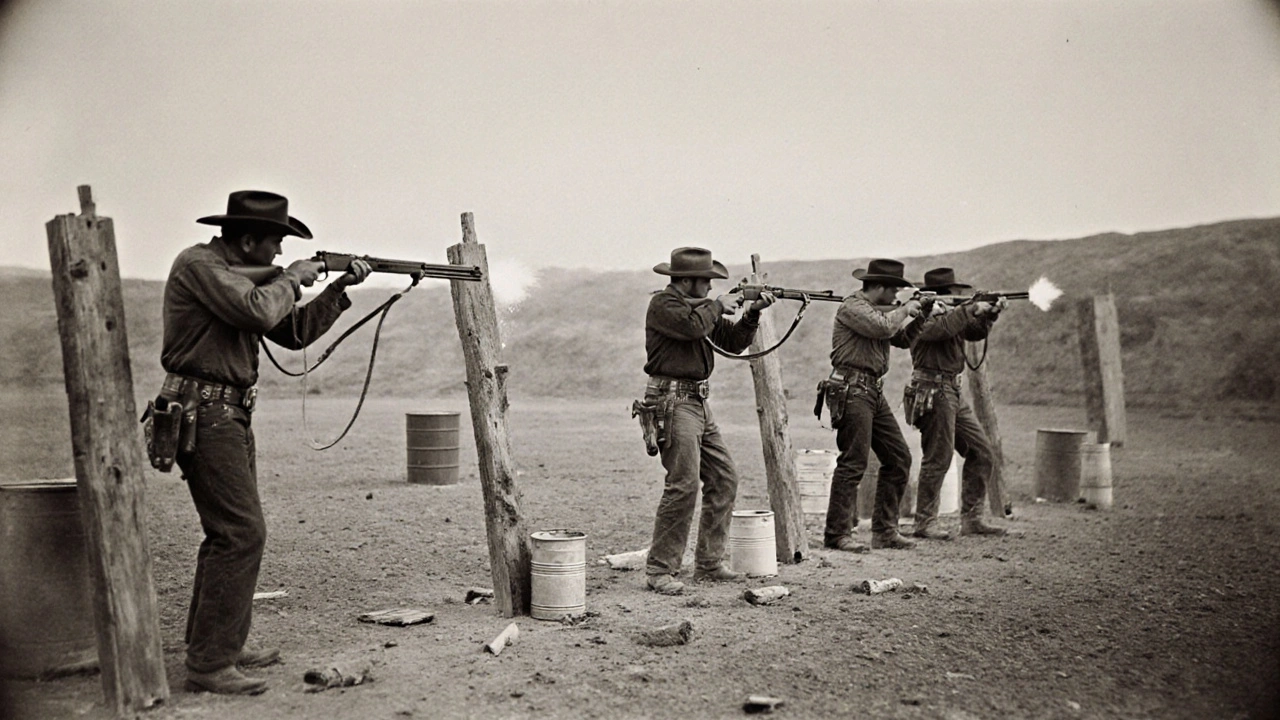
It Fits the Rules - and the Spirit
Cowboy Action Shooting, as organized by the Single Action Shooting Society (SASS), has strict rules. Firearms must be from the 1899 or earlier. Semi-autos? Not allowed. Pump-actions? Only if they were made before 1900 and are chambered in period-correct calibers - which is rare. Lever-actions? They’re the sweet spot. The Winchester 1873, the Marlin 1894, the Henry 1860 - all were mass-produced before 1900 and still in common use.
It’s not just about rules, though. It’s about authenticity. The whole point of cowboy action shooting is to step into the shoes of a 19th-century frontiersman. That means using the same tools they did. And for most of them, the lever-action rifle was the most trusted long gun they owned. It wasn’t fancy. It wasn’t high-tech. But it worked - and it worked every time.
It’s Easier to Carry on Horseback
Picture this: you’re riding at a gallop, rifle slung across your back. You need to fire. With a bolt-action or semi-auto, you’d have to stop, dismount, and get into a proper stance. With a lever-action? You can fire from the saddle. The lever is easy to reach with one hand. You can pull it down while holding the reins with your other hand. That’s why cavalry units used them - and why mounted cowboys did too.
Modern shooters in cowboy action events still do this. They ride, they dismount, they shoot, they reload - all while keeping their rifle in hand. The lever-action’s compact design and balanced weight make it ideal. A long rifle with a bolt action? Too unwieldy. A heavy shotgun? Hard to swing. The lever-action? It’s the Goldilocks gun: not too heavy, not too long, just right.
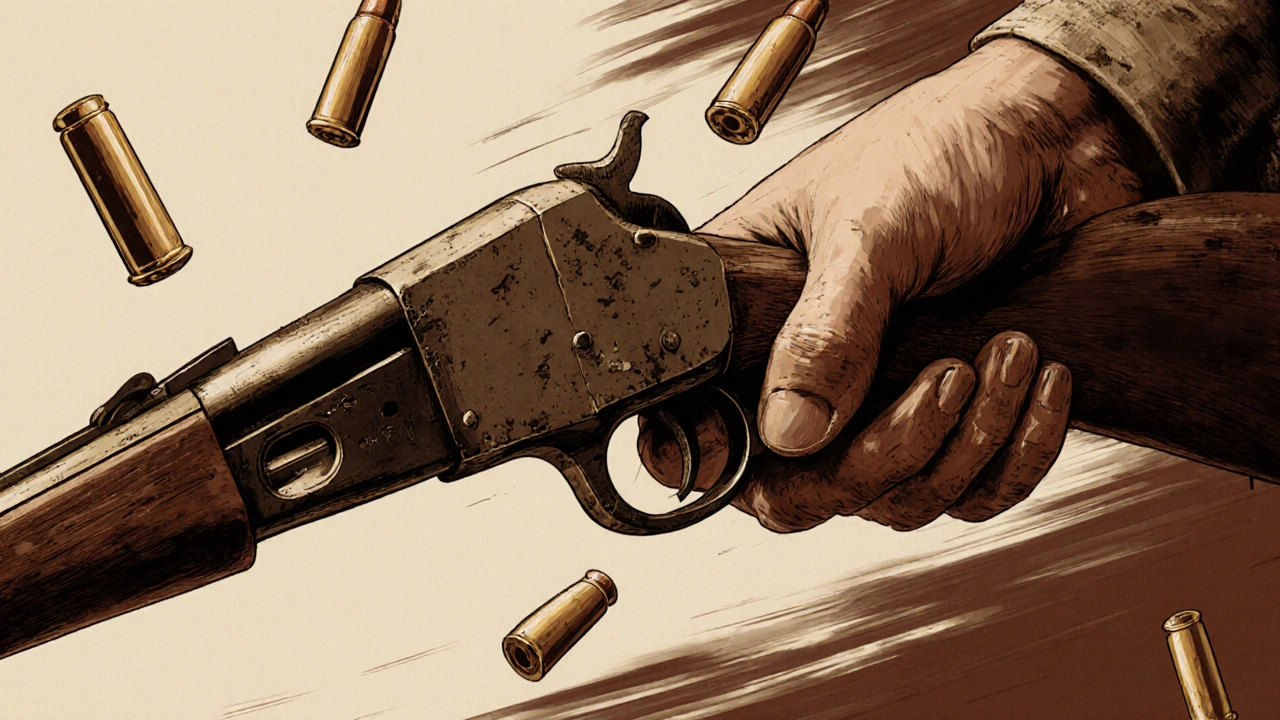
It’s Built to Last - and Still Is
Many of the rifles used in today’s matches aren’t new. They’re original 1880s Winchesters or Marlin 1894s that have been cleaned, repaired, and passed down. Some shooters even use rifles their great-grandfathers carried. These guns were made with forged steel, hand-fitted parts, and brass components that don’t corrode easily. They weren’t built to be cheap. They were built to outlive their owners.
Even modern reproductions - like those from Uberti, Cimarron, or Henry - stick to the same designs. They use the same materials. They’re not lighter, not sleeker, not “improved.” They’re faithful copies. Because when you’re shooting cowboy action, you’re not just shooting a gun. You’re shooting history.
It’s Not About Power - It’s About Control
Some people think modern rifles are better because they shoot harder. But cowboy action shooting isn’t about stopping a bear. It’s about hitting small steel targets at 25 yards. You don’t need a .308. You don’t need a magnum. You need consistency. A .45 Colt from a lever-action rifle kicks like a mule, but it’s manageable. The recoil is straight back, not up. That makes follow-up shots faster.
And here’s the thing: most matches don’t require one perfect shot. They require five fast, accurate shots in under five seconds. That’s not about raw power. It’s about rhythm. The lever-action lets you find that rhythm. The clack-clack of the lever cycling becomes part of your breathing. You don’t fight the gun. You flow with it.
It’s the Only Gun That Feels Right
Ask any shooter who’s switched from a semi-auto to a lever-action in cowboy action shooting. They’ll tell you the same thing: it just feels right. There’s a connection you don’t get with modern firearms. The weight. The balance. The sound. The way the lever moves like a pendulum - smooth, natural, almost musical.
It’s not nostalgia. It’s physics. The design has been tested for over 150 years. It works. It’s simple. It’s reliable. And in an age of digital everything, there’s something deeply satisfying about a machine that doesn’t need batteries, software, or a manual. You pull the lever. It fires. You repeat. No apps. No updates. Just you, the rifle, and the target.
That’s why cowboys - past and present - stick with it. It’s not about tradition for tradition’s sake. It’s about function. It’s about what works when it matters.
Can you use a modern lever-action rifle in cowboy action shooting?
Yes, but only if it’s a reproduction of a pre-1900 design. Modern lever-actions like the Winchester Repeating Arms Model 94 (post-1964) or newer Henry rifles are allowed only if they match the appearance and function of 19th-century models. The Single Action Shooting Society (SASS) requires firearms to be from 1899 or earlier, or faithful reproductions of those models. Modern features like synthetic stocks, adjustable sights, or internal modifications that change the original design are not permitted.
Why not use a bolt-action rifle in cowboy action shooting?
Bolt-action rifles are generally not allowed in official cowboy action shooting matches because they weren’t commonly used by cowboys in the 1870s-1890s. The sport emphasizes historical accuracy, and bolt-actions were mostly military or hunting rifles during that time, not everyday cowboy gear. Even if you have an original 1890s bolt-action, most matches still disqualify them because they don’t fit the cultural and practical context of the era. The lever-action was the civilian’s rifle of choice.
What’s the most popular lever-action rifle used today?
The Winchester Model 1873 is the most iconic and widely used lever-action in cowboy action shooting. Its balance, reliability, and availability in .44-40 and .38-40 calibers made it the standard. Today, reproductions from Uberti and Cimarron are the go-to choices. The Marlin Model 1894 is also popular, especially in .357 Magnum, because it handles higher-pressure rounds better than older models. Henry Repeating Arms’ 1860 and 1866 replicas are favored for their smooth action and classic look.
Do lever-action rifles have any disadvantages in cowboy action shooting?
Yes. The tubular magazine means you can’t use pointed bullets - only round-nose or flat-nose. Pointed bullets can accidentally set off the primer of the round in front of them, causing a dangerous chain-fire. Also, lever-actions are slower to reload than modern semi-autos. And they’re not ideal for long-range shooting - effective range is typically under 100 yards. But none of these are dealbreakers in cowboy action shooting, where speed, reliability, and historical accuracy matter more than range or capacity.
Is it harder to learn to shoot a lever-action rifle than a semi-auto?
It’s different, not harder. The lever motion takes practice to master smoothly. Beginners often jerk the lever or don’t complete the full cycle, causing jams. But once you get the rhythm - and it’s a rhythm, not a motion - it becomes second nature. Most shooters say it takes about 50 rounds to get comfortable. After that, the lever-action often feels faster and more intuitive than a semi-auto, especially under pressure. The key is repetition and muscle memory.

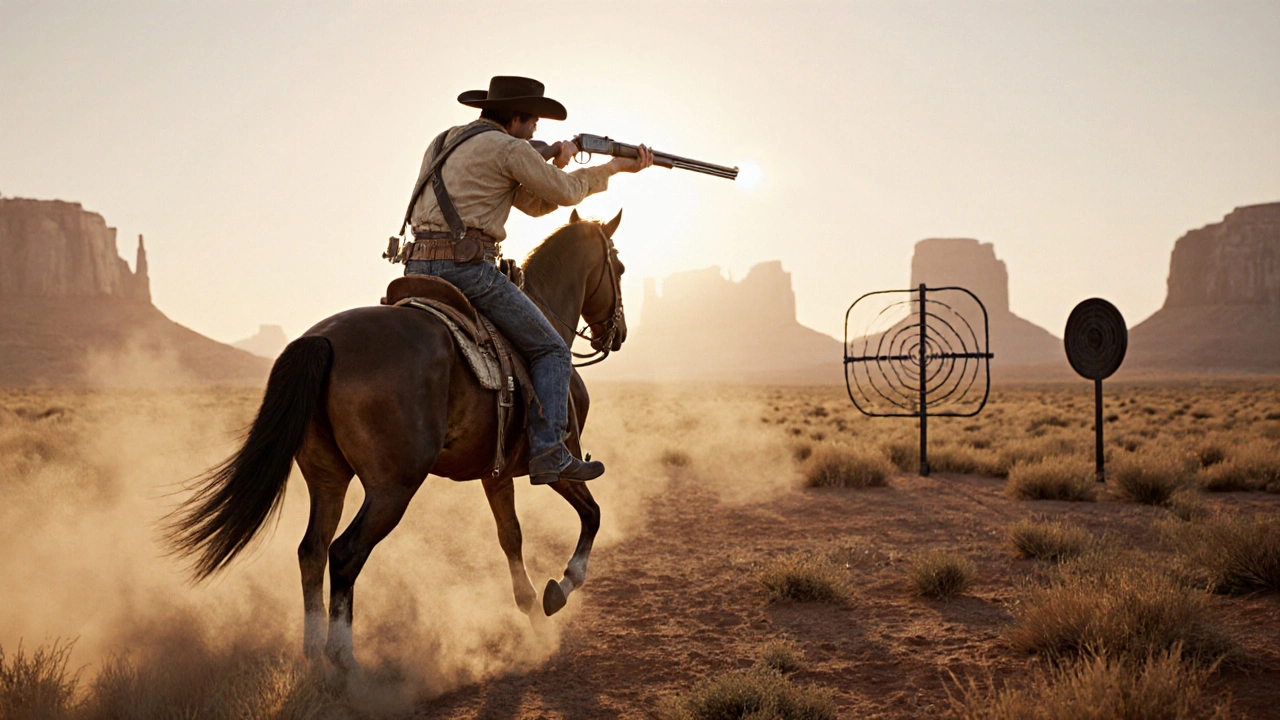
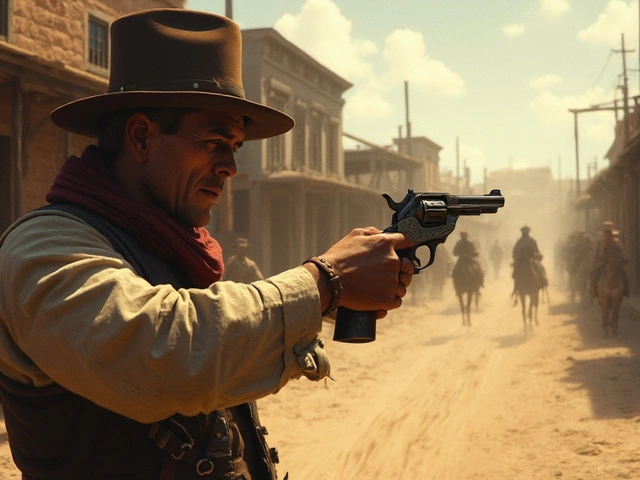
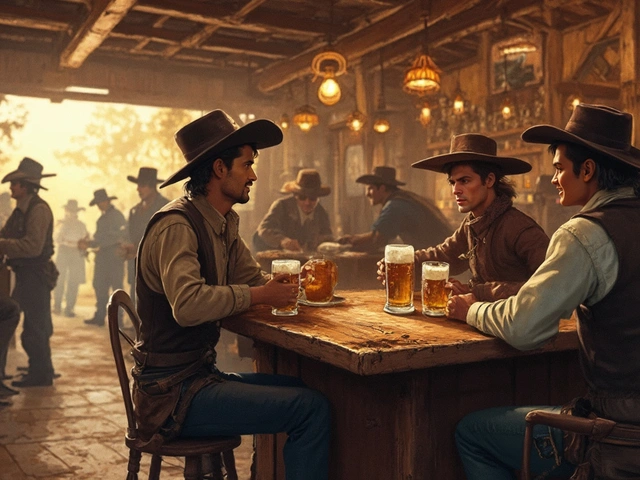

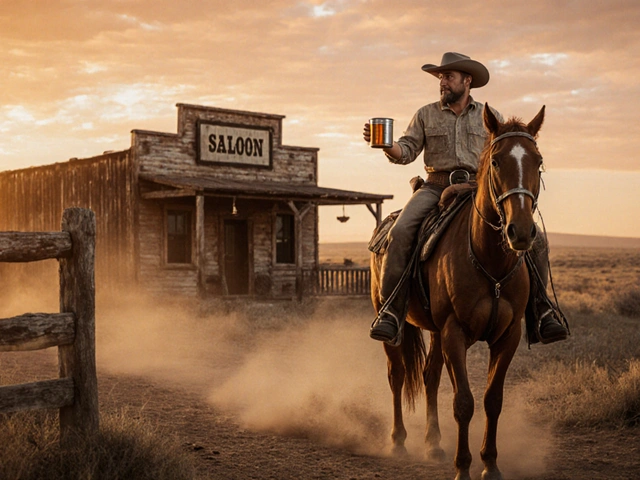

Jane San Miguel
October 29, 2025 AT 01:54